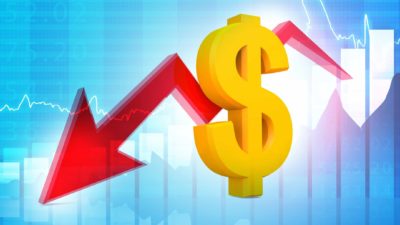It's been a rough day for the S&P/ASX 200 Index (ASX: XJO) this Thursday so far. Yesterday, the ASX 200 closed at 7,077.6 points. But so far today, the index has shed a horrid 1.63% and has dropped down to just 6,962.8 points at the time of writing.
Today's falls happened right out of the gate this morning. But they might have also been helped along by the latest Australian employment data from the Australian Bureau of Statistics.
This morning, the ABS released its latest employment metrics for the Australian economy, covering the month of September 2023. And they make for some interesting reading.
The ABS reports that the Australian unemployment rate has fallen in seasonally adjusted terms. At the end of August, the unemployment rate was sitting at 3.7%. But as of the end of September, it had fallen down to 3.6%.
Digging in deeper, the number of employed Australians at the end of September stood at 14.111 million, up from 14.105 million in the previous month. Inversely, the number of unemployed Australians dropped from 540,300 to 520,500.
The underemployment rate also fell during September, dropping from 6.5% to 6.4% in seasonally adjusted terms. However, the labour participation rate dipped from 67% at the end of August to 66.7% by the end of last month. The number of monthly hours worked also saw a slight dip, going from 1,938 million hours to 1,930 million.
Why is the ASX 200 dropping amid these lower unemployment numbers?
These numbers show that the Australian economy remains in rude health, with the number of Australians seeking work remaining near a generational low. So why are ASX investors in such a bad mood today then?
Well, we don't know for sure if these unemployment numbers are responsible for the losses we are seeing on the ASX 200 Index this Thursday. But they certainly don't seem to be helping.
There's a good reason for this. While we might think that low unemployment is a good piece of economic news, it's not exactly what the Reserve Bank of Australia (RBA) wants to see right now.
As we all know, the RBA has been ratcheting up interest rates sharply over the past 18 months or so. This is being done in an attempt to bring down rampant inflation, which is still sitting at 5.2% (as of August's numbers). That's clearly well below the RBA's traditional target band of 2-3%.
For inflation to cool, most economists accept that the economy will have to slow, at least slightly. The RBA has hiked up the cash rate sharply to its present 4.1% in a bid to make this happen, with more interest rate rises still a possibility.
The fact that unemployment is falling, and not rising, indicates that these rate hikes aren't doing their job thus far. And that means that more rate hikes have become more likely today, thanks to this latest data.
No ASX investors want to see higher interest rates. Higher rates pull money out of the share market and other 'risky' asset classes and towards safer investments like cash and government bonds. Thus, high rates are bad news for ASX 200 shares.
This could be why we are seeing such a negative reaction on the stock markets this Thursday.









